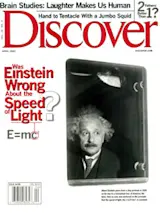If a giraffe is an animal designed by committee, a bulldog must have been put together by a vet facing large house payments. Newborn bulldogs typically have heads so out of proportion to a mother's birth canal that they have to be delivered by cesarean section. By the time they become adults, their skulls are as big around as the dogs' height at the shoulder. Bulldogs also frequently have bad hearts. "I have a friend who's been trying to breed bulldogs for years," says Janice Koler-Matznick, founder of the Primitive and Aboriginal Dog Society. "She'll get a litter of three puppies, all of which die, or they'll all have bad hearts, and she'll have to put them down. It's just heartbreaking."
Koler-Matznick isn't too keen on German shepherds, either, at least not the ones that win at dog shows. ("They have this wonderfully long rear end, which is also crippled," ...














